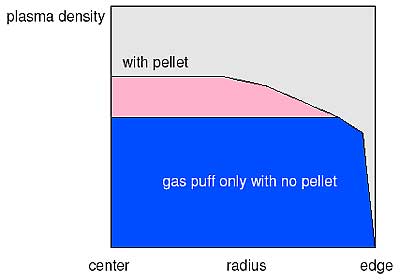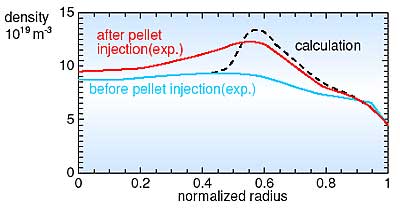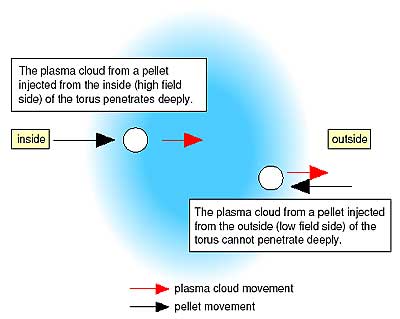| Experiments have demonstrated that pellets can penetrate deeper into a plasma if they are injected from the high-field side instead of the low-field side. An example is shown in Fig. 3-5. The mechanism is explained as follows (Fig. 3-6). The high-speed pellet melts, vaporizes, and ionizes to become a high-density plasma cloud. This high-density plasma cloud, being strongly diamagnetic, is accelerated toward the low-field side. Therefore high-field side pellet injection can fuel the plasma core much better than low-field side pellet injection. The analysis of transport properties of the high-density plasma cloud requires the solution of three-dimensional transport equations. This is a complicated calculation and its method has not been fully established yet. A simplified model of pellet vaporization and penetration has been incorporated into the ASTRA plasma transport code. The calculated result is in a good agreement with the experiment (Fig. 3-5). Please note that the experimental profile is flatter because of limitations in spatial and temporal resolution. A calculation with ITER parameters shows that high-field side pellet injection enables fuelling up to 60-70% of the minor radius with a modest pellet speed of 0.5 km/s, which potentially enhances the fusion gain by a factor of two, for example. |


